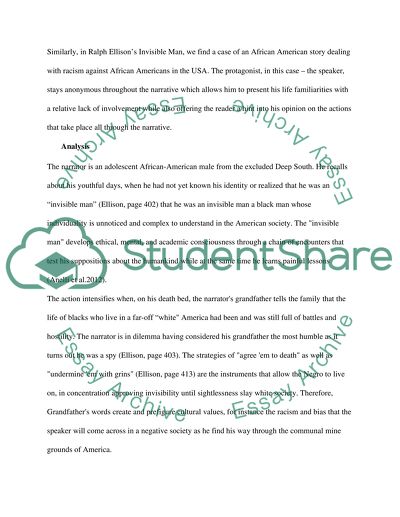Cite this document
(“Racism in Ralph Ellison's Invisible Man Research Paper”, n.d.)
Racism in Ralph Ellison's Invisible Man Research Paper. Retrieved from https://studentshare.org/literature/1463260-final-essay
Racism in Ralph Ellison's Invisible Man Research Paper. Retrieved from https://studentshare.org/literature/1463260-final-essay
(Racism in Ralph Ellison'S Invisible Man Research Paper)
Racism in Ralph Ellison'S Invisible Man Research Paper. https://studentshare.org/literature/1463260-final-essay.
Racism in Ralph Ellison'S Invisible Man Research Paper. https://studentshare.org/literature/1463260-final-essay.
“Racism in Ralph Ellison'S Invisible Man Research Paper”, n.d. https://studentshare.org/literature/1463260-final-essay.


